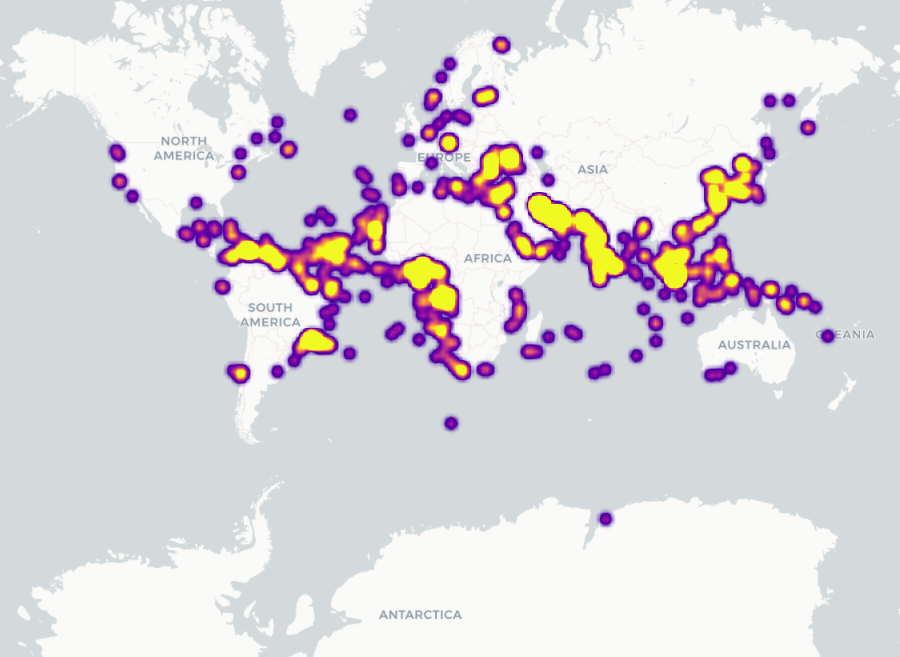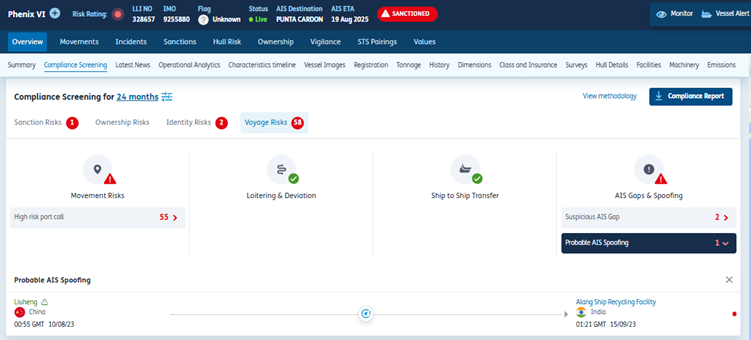
By Thomas Spriggs
Data Scientist
In the opaque world of maritime trade, transparency is critical. Yet, as sanctions tighten and illicit trade routes evolve, vessels are finding new ways to disguise their movements. One of the most troubling trends is AIS spoofing- the deliberate falsification of a ship’s location data.
For years, vessels engaged in illicit activity simply switched off their AIS transponders, creating gaps in reporting. But those gaps quickly became red flags. Spoofing, by contrast, allows ships to “hide in plain sight,” transmitting false signals that suggest a vessel is somewhere it is not. The data keeps flowing, yet it cannot be trusted.

The Market Problem: Trust Eroded by Deceptive Signals
Spoofing is harder to detect than silence. Unless verified by satellite imagery or eyewitness reports, falsified AIS signals often blend into the stream of legitimate data. Illicit actors exploit this loophole to move contraband, bypass sanctions, and conceal illicit trade.
For shipping companies, insurers, regulators, and financiers, the consequences are severe. They risk relying on data that misrepresents reality, leading to compliance failures, financial loss, and reputational damage.

AIS Spoofing hotspots
Our Approach: Data Science Meets Maritime Domain Expertise
To confront this challenge, our team has combined rule-based models, machine learning, and our proprietary AIS receiver network. By cleaning and analysing vessel voyages, we’ve trained models to recognize patterns that strongly suggest spoofing.
To ensure accuracy, detections require agreement between multiple models—significantly reducing false positives while boosting confidence in the results.

Evolution of the Solution
Our initial release brought strong coverage of spoofing activity, and followed closely by rapid evolutions to our methods:
The result is a continually improving system, one that keeps pace with the ever-changing face of deceptive shipping practices.

Delivering Customer Value
For our clients, this solution brings more than just alerts. It provides:
By pairing advanced data science with domain expertise, we provide insights that most organisations could not achieve alone.


The Road Ahead
AIS spoofing will not stand still. New techniques emerge as sanctions shift, and geopolitical conflicts unfold. That’s why our approach is not static: it evolves through continuous research, client collaboration, and innovation in machine learning.
Our mission is to ensure that deceptive shipping practices never go undetected, and that our clients have the clarity and confidence they need to make high-stakes decisions.

Conclusion: Turning Insight into Action
Spoofing is one of the most sophisticated challenges facing maritime risk and compliance teams today. But with the right combination of technology, expertise, and ground-truth data, it can be detected, flagged, and acted upon.
Our Advanced Risk & Compliance (ARC) suite brings these capabilities to life- delivering explainable, data-driven insights that help clients stay ahead of deceptive shipping practices.
Learn more about how ARC can enhance your risk evaluation and protect your organisation against the hidden risks of AIS spoofing.
Intelligent, actionable compliance insight designed to make your life easier
